Go to Cold Lake come winter and have an ice fishing-lake trout adventure and vacation. It’s unique. The people are friendly, welcoming, and the community on the ice are eager to share their knowledge. Lake trout are plentiful, and there’s a very real chance of catching a big one, however, big is a relative term. Five to ten pound fish are the average. A friend of mine, who headed to more remote parts of the lake got on a big bite where most fish were 12 to 15 pounds, with one going 18. Every year anglers hit fish in the twenties and on occasion, in the thirties. It’s a lake so big, that you could fool yourself into thinking you're on the ocean as it can span more than 20 km between shores.
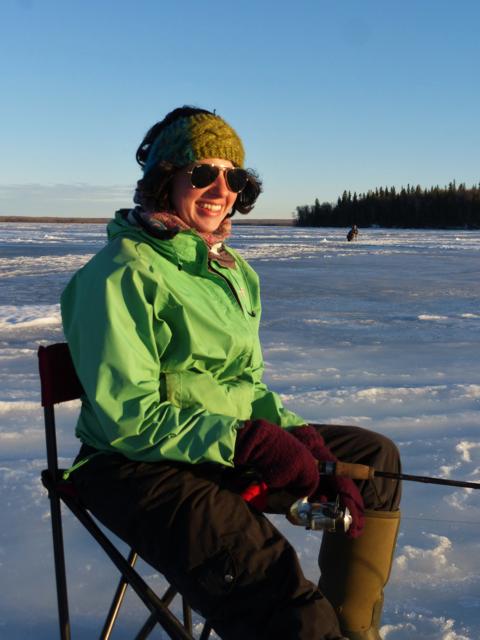
Cold Lake
In Alberta, there are few places where lake trout are readily accessible, and fewer still that offer quality lake trout fishing come winter. But consider what’s going on at Cold Lake, and the outstanding fishing that occurs from ice on to ice off. Anglers from both sides of the Alberta/Saskatchewan border are making the winter pilgrimage to get in on the action. The Cold Lake fishery is about as good as it gets for accessibility, numbers, and the size of trout.
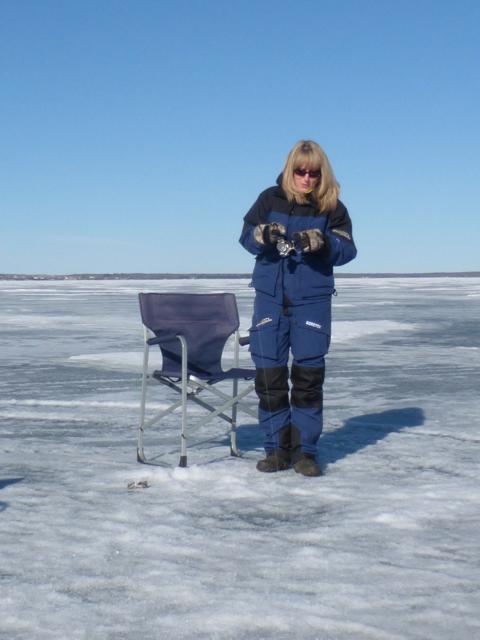
Cold Lake, Lake Trout
There are many ways to catch Cold Lake, lake trout, but the most tried and true is the ever reliable jig and minnow. Of all the jigs on the market, none is more coveted than the "Cold Lake Special", described as a one ounce tube jig with a stinger hook attached. So named because of its immense popularity and fish catching ability on the lake that bears its name. This jig alone has been the undoing of thousands of lake trout, but I'm here to tell you that the Cold Lake Special is not the only jig in town when it comes to catching the eye of Cold Lake Lakers. I found the three and a half, and 5 inch tubes stuffed around a quarter ounce lead head jig outfitted with a heavy duty hook is just as capable at catching Lakers. I'd even go as far to say that on a light bite, they outperform the heavier jigs, simply because they are lighter, and therefore easier for a fish to inhale.
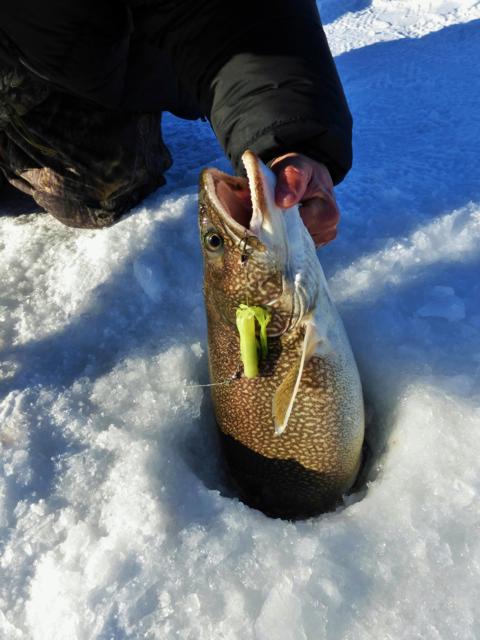
The tried and true jig and minnow
The thing about Cold Lake is that it’s sheer size alone can intimidate the new and uninitiated. Underwater humps can extend for hundreds of meters, fish can be found 30 feet deep, 130 feet deep, or even deeper still. They can be found on one side of a point, near the bottom edge of a drop off, or suspended chasing bait fish. Lakers will do whatever they want, but thankfully for us, there are things we can do that will help us find and catch them, no matter what conditions we're presented with. My advice is don't worry. Really! I often say ninety percent of success is showing up, and that’s exactly what you need to do if you want to get in on the great fishing at Cold Lake.
Know going in that you will learn, and continue to learn, about locations, techniques, and timing. The more time you put in on this lake, the more you will get out of it. I've been going for years and in my mind, I've barely scratched the surface. I can say with confidence, I have a half dozen "go to" spots, where I can reliably go and catch Lakers. On good days, any hook in just about any location will catch fish. These are the days that I'll start exploring. On tough days, I revert back to known laker hotspots and work the fish I know.
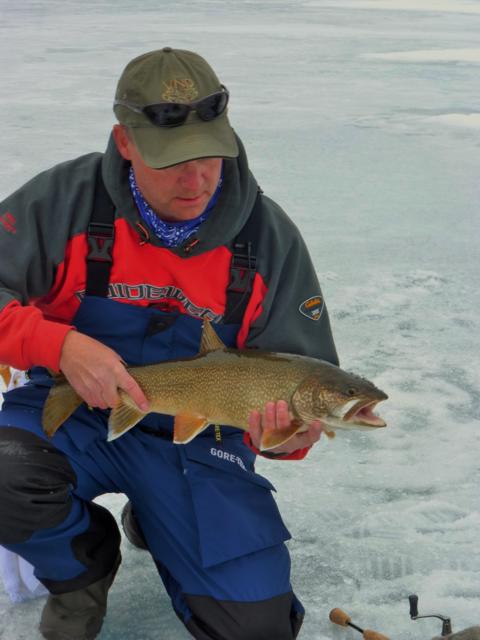
One of my Go To Spots
If there was one piece of electronics that really shines and can prove extremely valuable on the ice, it’s the Vexilar flasher. A quality flasher unit in my eyes. It instantly relays information about jig depth, fish depth and what they are doing in relation to each other. I can tell you, when it comes to fishing with flasher units, nothing is more exciting than watching a fat red line rocket up from the bottom to intercept your lure, and then feeling that distinctive thump as fish and lure collide. And that happens often.
While there are a multitude of lures, hooks, and jigs people use, I'm here to simplify this and get you started. Get some jigs, my favourite are tube jigs, but I've also had lots of luck with bucktail jigs, and get yourself an assortment of sizes, starting around a quarter ounce, and going up to 2 ounces. My favourite weights go from a quarter ounce to one ounce. Find deep water, typically off a point, or drop off and drill a bunch, and I mean a bunch of holes from deep to shallow, and back again. Then take your jig, tip it with the minnow of your choice and drop it to the bottom. Be alert. Quite often a laker will rocket up from the bottom and bite the jig on the way down. If, when you're letting out line, you feel you've hit bottom, but bottom should be much deeper, quickly close the bail and reel up super-fast until you catch up with the fish, then set the hook. I can't tell you how many Lakers I've hit this way, but there have been a lot.
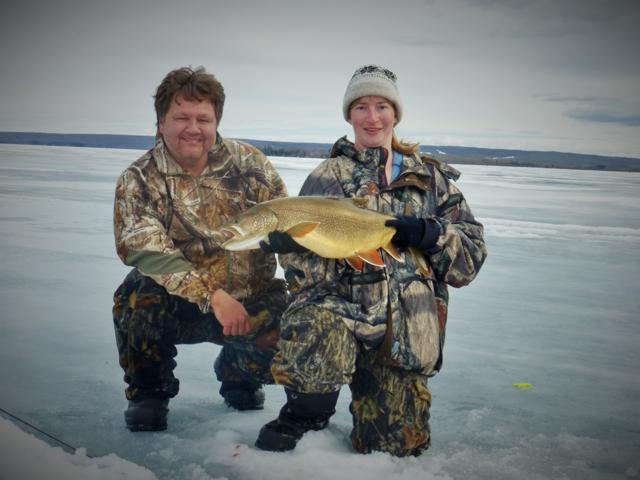
The best bite is at first light
Should the jig and minnow make it to the bottom, lightly jig it, then let it stand still for a few seconds, reel up a bit, then repeat. What you are doing is working the water column, bottom to top, and if there are Lakers around, sooner or later you will get bites. I found that herring, smelts, anchovies, and those frozen Parkers minnows all work well, so don't get too wound up over bait selection. So long as there’s some form of minnow on the end of that jig, there will be a laker or two willing to give it a go. If at all possible, get on the lake for first light, as those first few hours are often when the trout are most active and the bites will be the hardest. If you can't make it out for first light, know that the Lakers will bite throughout the day but the bites will typically be lighter. The most important part to success at Cold Lake is showing up. Make the trip, talk to the people on the ice and soon you too will find yourself staring down a hole with a bent fishing rod in hand.
Good Luck!

